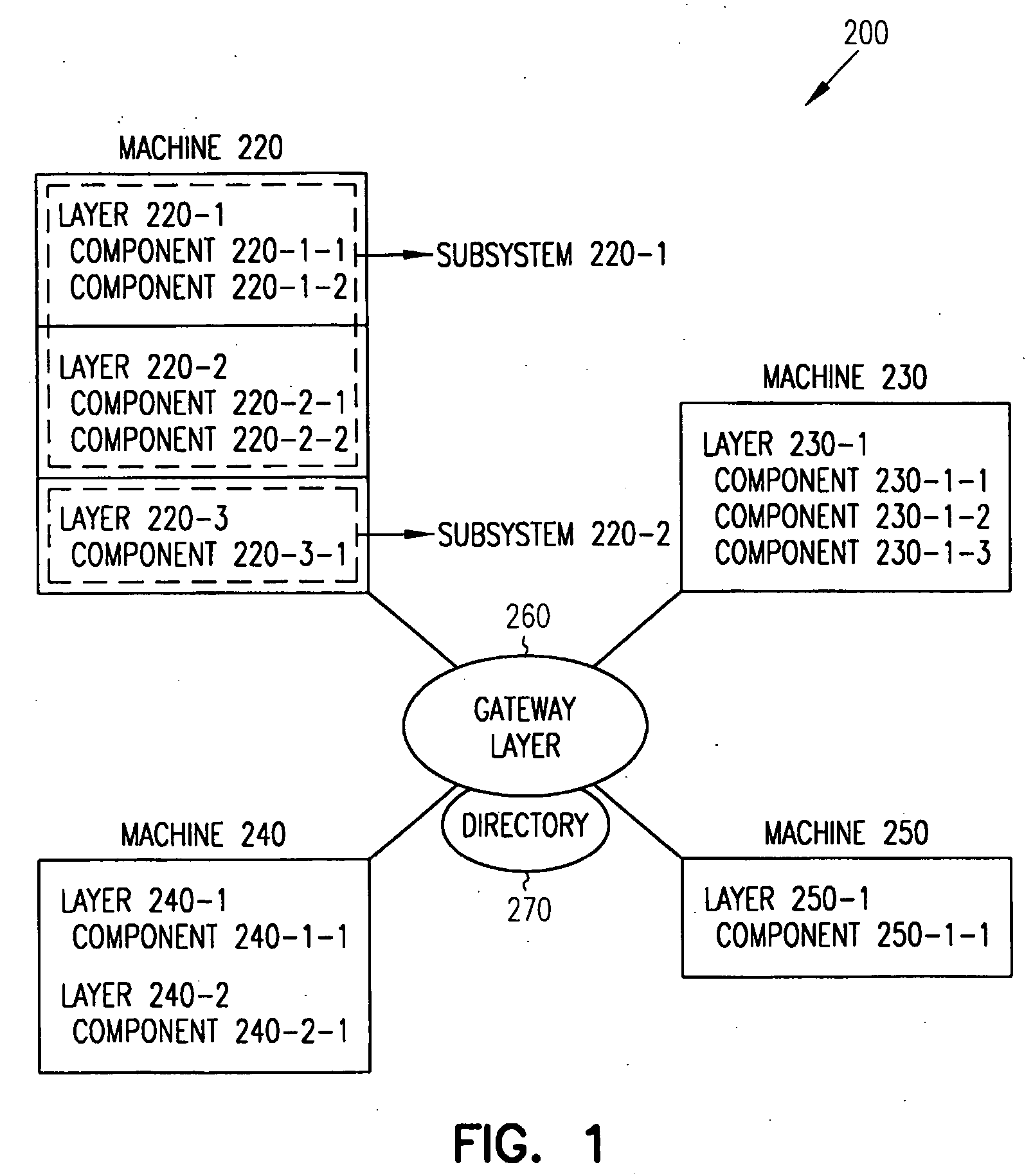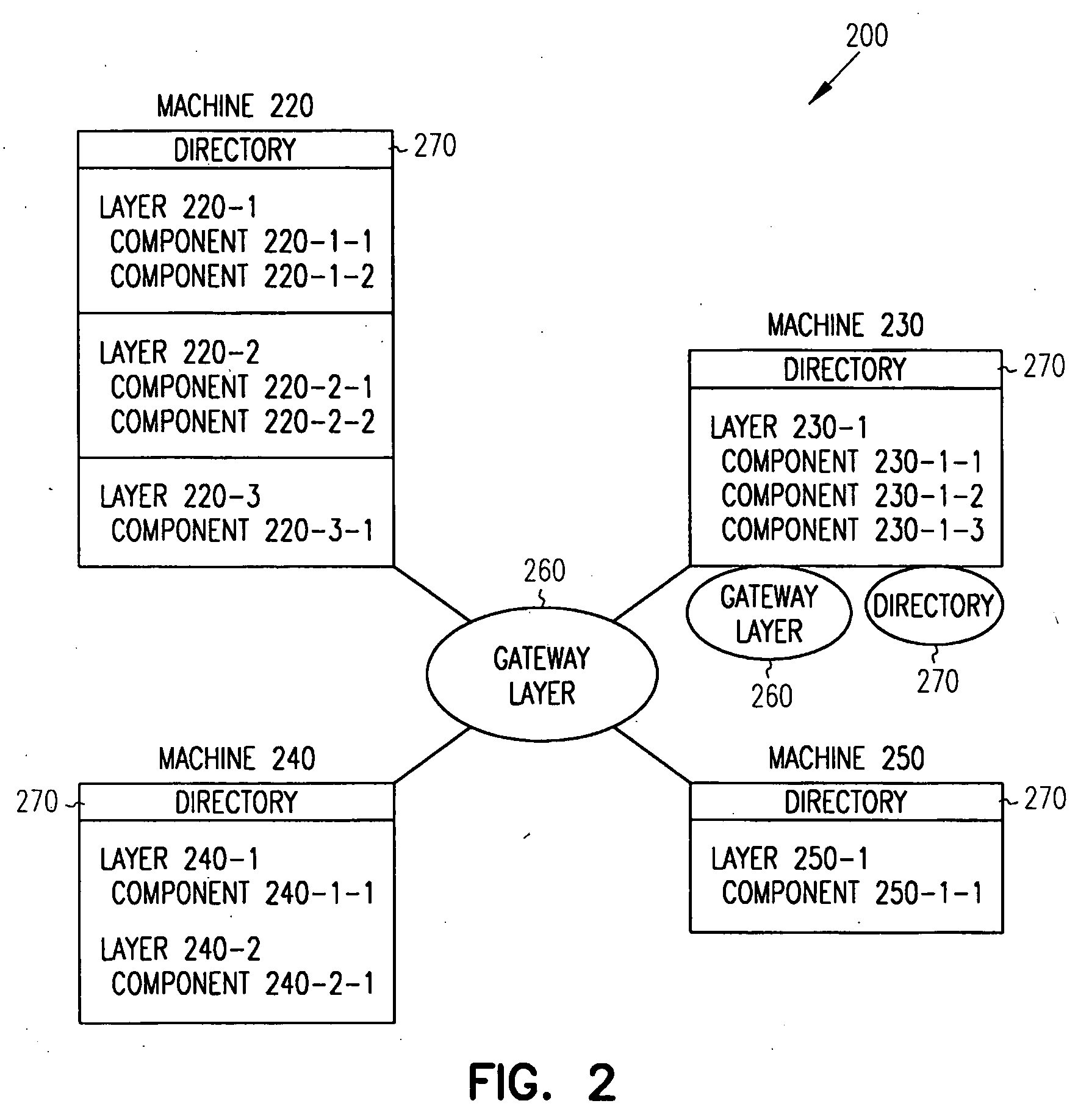Generic design approach for multi-layer architecture
- Summary
- Abstract
- Description
- Claims
- Application Information
AI Technical Summary
Problems solved by technology
Method used
Image
Examples
Embodiment Construction
[0018] In one embodiment of the present invention, a gateway layer is introduced into an information system to implement a platform independent routing architecture for systems with multiple components, layers, systems / subsystems, and machines / nodes. The gateway layer provides the necessary interfaces for locating and routing the service requests from and to each and every component in the system, and it serves as a common entry point to both internal service requests (i.e. within a layer or subsystem) and external service requests (i.e. from other systems or machines).
[0019] The gateway layer uses a software model driven approach to derive the location information of each component and the same is populated into a directory. In this instance, a software model driven approach refers to modeling every significant part of the system as data and using that data in the gateway layer. Because a software model-driven approach for development and deployment is used, the details about all ...
PUM
 Login to View More
Login to View More Abstract
Description
Claims
Application Information
 Login to View More
Login to View More - R&D
- Intellectual Property
- Life Sciences
- Materials
- Tech Scout
- Unparalleled Data Quality
- Higher Quality Content
- 60% Fewer Hallucinations
Browse by: Latest US Patents, China's latest patents, Technical Efficacy Thesaurus, Application Domain, Technology Topic, Popular Technical Reports.
© 2025 PatSnap. All rights reserved.Legal|Privacy policy|Modern Slavery Act Transparency Statement|Sitemap|About US| Contact US: help@patsnap.com



